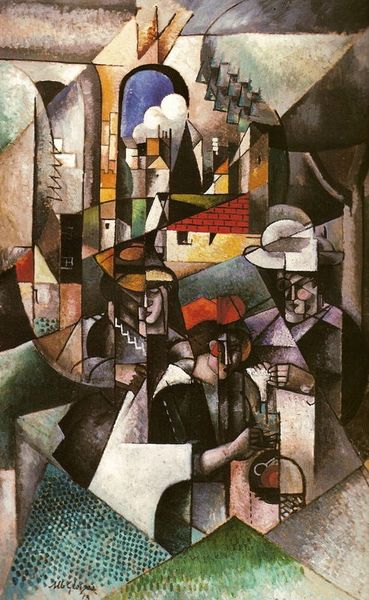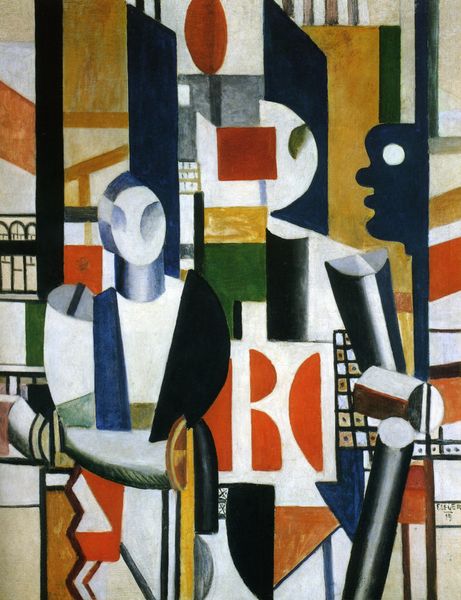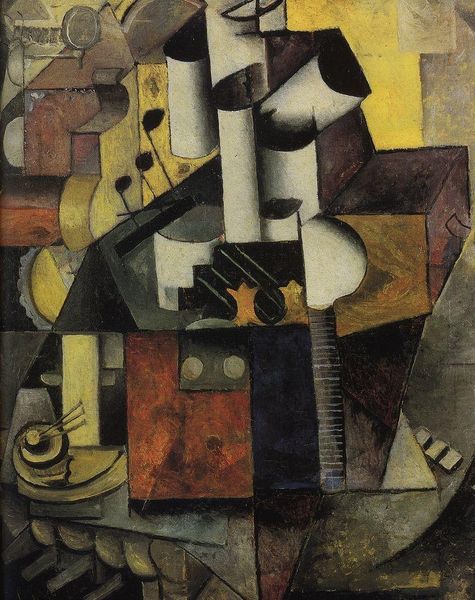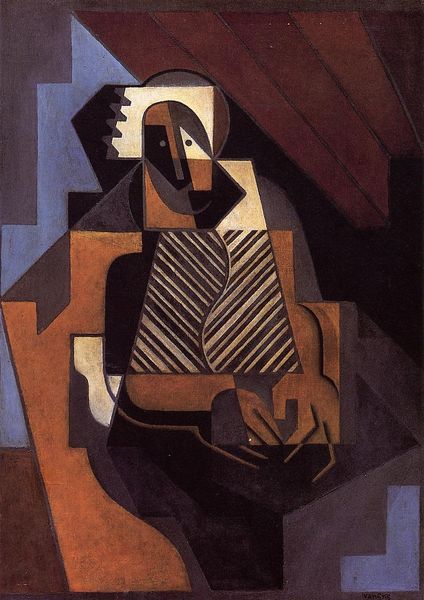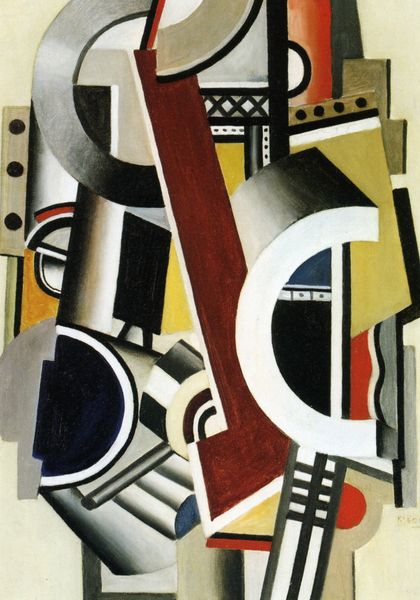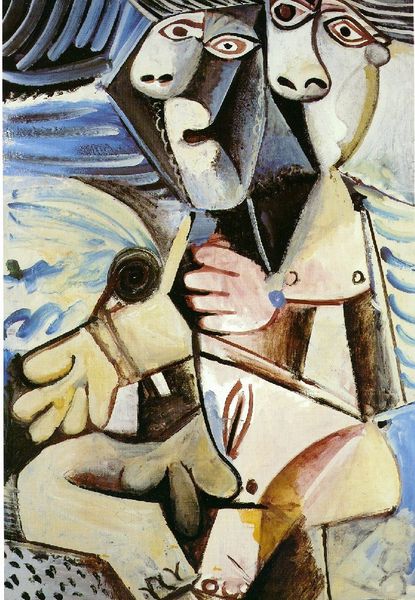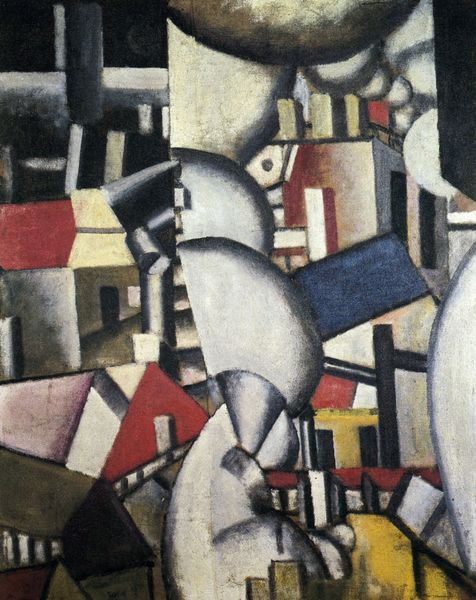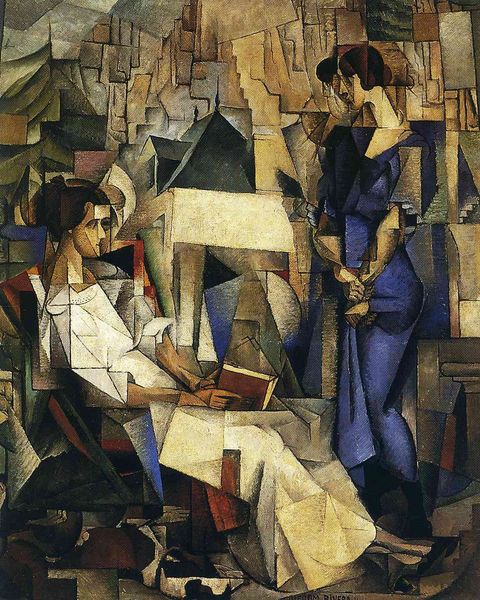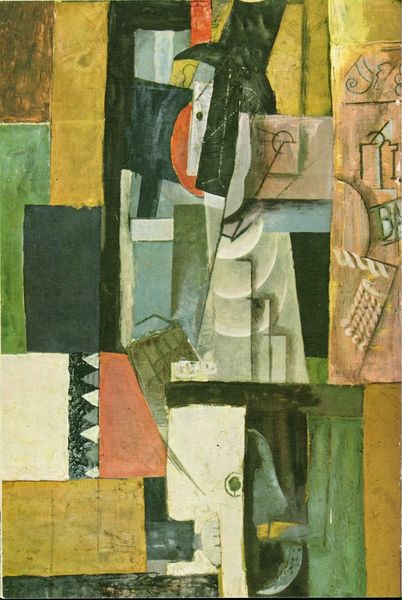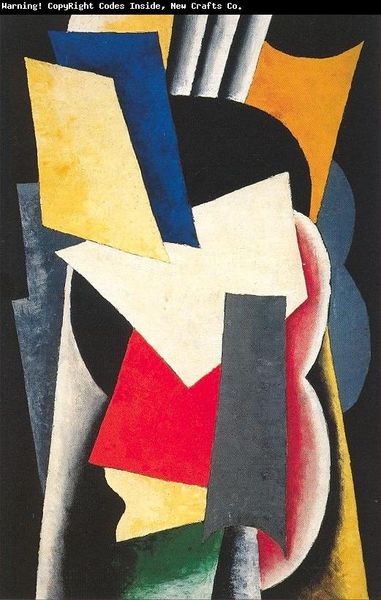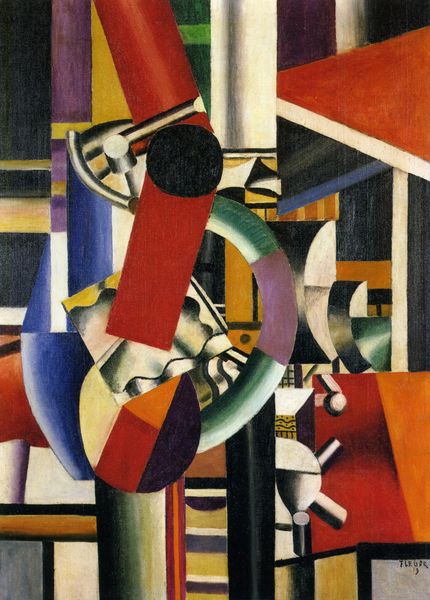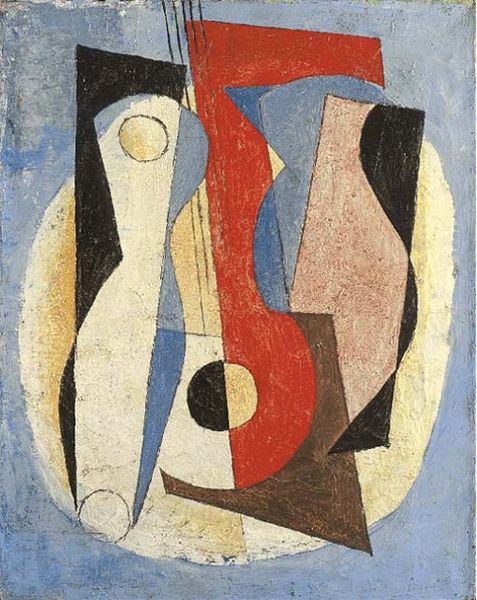
painting, oil-paint
#
portrait
#
cubism
#
painting
#
oil-paint
#
figuration
#
oil painting
#
geometric
#
group-portraits
#
ashcan-school
#
portrait art
#
modernism
Copyright: Public domain US
Editor: Fernand Léger's "The Three Comrades," painted in 1920 using oil paints, presents this almost machine-like depiction of figures. The geometric shapes make it hard to immediately recognize them as people. What cultural symbols might be hidden within this Cubist language? Curator: Look at how Léger uses the cylinder and sphere. Don't they echo the shapes of industry, of machines? Consider the aftermath of the First World War when this was painted. How do you think the public viewed machines at that time? Editor: That's interesting! There's this sense of mechanical reconstruction and maybe, a lack of clear identity of the men? Curator: Indeed. The lack of clear individual faces behind shapes could be seen as a commentary on the soldier, an anonymous cog within a machine. Are these men friends and allies, or simply laborers performing their duty? Is the symbol a deconstruction of comradeship in a new, mechanized era? Do the geometric forms remind you of earlier iconography? Editor: You mean like how classical paintings represented heroes with certain symbolic objects? Curator: Exactly! Léger takes those traditional codes and distills them into abstract shapes. It forces us to confront a modern and alienating view of human interaction in the wake of total war. What kind of memory are these three sharing? Editor: It's so much more than just a Cubist painting; it uses symbols of both tradition and industrial progress to ask questions about society and friendship. I never would have picked up on those potential cultural references. Curator: And now you've seen how the old can speak through the new. Léger encourages us to decode the legacy of modern imagery.
Comments
No comments
Be the first to comment and join the conversation on the ultimate creative platform.
